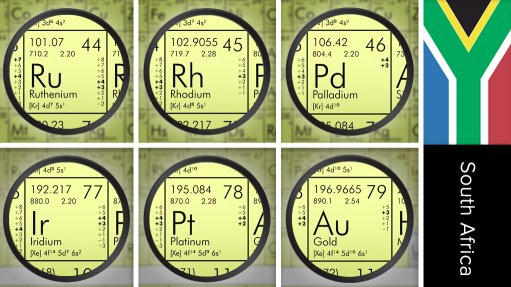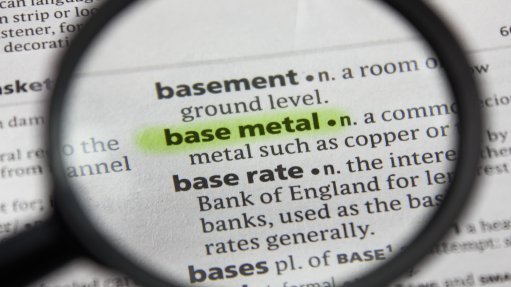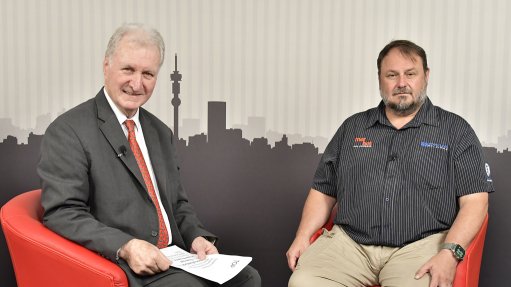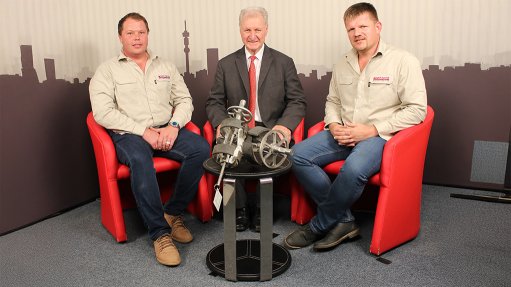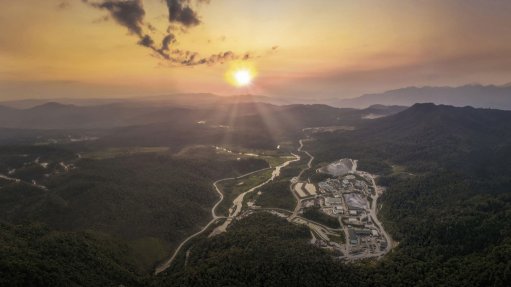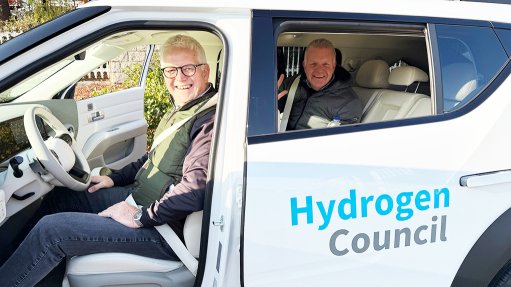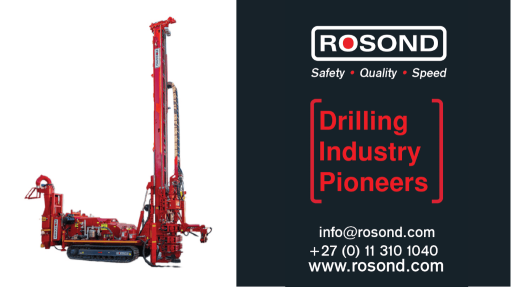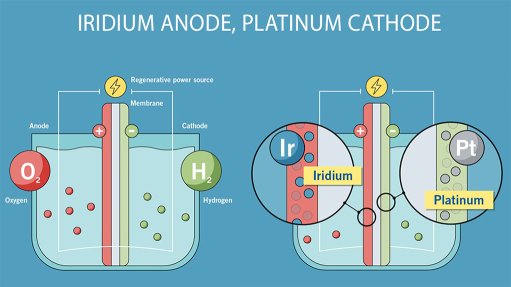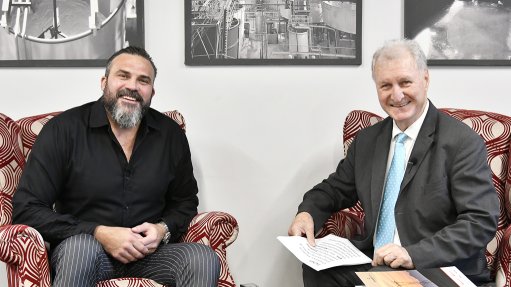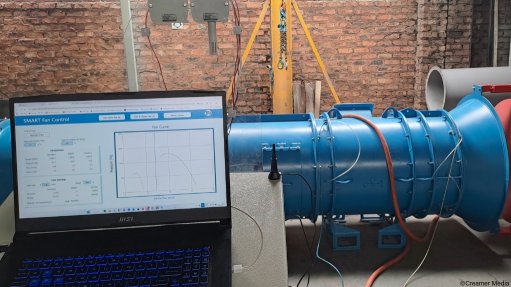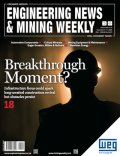PGM Day highlights ruthenium’s bright future in hydrogen, biomass, electronics
JOHANNESBURG (miningweekly.com) – After listening to Heraeus Precious Metals trading head Dominik Sperzel placing ruthenium on a new high pedestal and describing this low-profile platinum group metal (PGM) as “my personal favourite”, PGM Industry Day chairperson Bernard Swanepoel remarked that he'd never met a person who speaks passionately about ruthenium but that, "We love it”.
Fortunately, South Africa hosts the world’s largest endowment of this PGM, a rare silvery-white hard transition metal that forms part the platinum, palladium, rhodium, iridium and osmium family of magical metals.
Following its latest PGM Day spotlighting, it's unlikely that ruthenium will be able to continue to hide its light under a bushel.
When questioned by PwC energy, utilities and resources leader Andries Rossouw on the things that have the potential to expand the PGM, a study entitled 'Ruthenium Unlocking Hydrogen Transportation' was brought to the fore. This study is authored by Sperzel, Dr Konrad Krois, as well as Dr Jenny Watts and Henk de Hoop, of SFA (Oxford).
“We’ve done a nice paper on ruthenium’s use in hydrogen’s transportation in particular,” Sperzel enthused.
While ruthenium is not consuming a lot of ounces “at the moment”, the authors believe it has a “bright future” in not only hydrogen, but also green chemistry and electronics.
In green chemistry, Sperzel noted: “We already see applications, where we go away from the classical fossil feedstocks into the greener feedstocks, could be wood biomass, could be something else that helps the system overall run on these different feedstocks, and then third, electronics.
“It’s a very, very versatile metal. It's very, very tricky, to deal with in certain instances, but with the spike in demand for semiconductors, with the spike driven by artificial intelligence applications, we believe that these high-end applications need high-end input materials,” Sperzel added during a panel discussion covered by Mining Weekly.
A big contribution is the facilitation of hydrogen’s transportation through green ammonia cracking, about which the Ammonia Energy Association is regularly reporting final investment decision-making, the latest being the CF-JERA-Mitsui mega-project in Louisiana, US, plus the near-tripling of the Northern Lights carbon capture and storage (CCS) project.
Meanwhile, ruthenium is solidifying its status as an indispensable catalyst in ammonia cracking amid its enabling of lower temperature reactions and high conversion, which leads to energy savings and longer catalyst lifespans.
This is positioning ruthenium as a strong hydrogen economy contender, catering to the demand from fuel cell technology, chemical manufacturing, and metal processing industries, the authors of the White Paper report.
Total ruthenium demand is estimated at around 800 000 oz/y with supply at around 955 000 oz/y, which leaves around 150 000 oz of ruthenium metal for the emerging hydrogen economy.
Despite a challenging environment for clean hydrogen, the Hydrogen Council finds that the effective implementation of already embedded policies could support the business case for the uptake of eight-million tons a year of clean hydrogen across the EU, the US and East Asia by 2030.
The council’s 'Closing the Cost Gap' report, developed with the analytical support of McKinsey, highlights that this can be achieved by the transposition of the EU Renewable Energy Directive at EU country level, rollout of Japan’s Contracts for Difference mechanism, implementation of South Korea’s Clean Hydrogen Portfolio Standard, and realisation of hydrogen-related sections of the US Inflation Reduction Act, resulting in either reducing the production cost of clean hydrogen and its derivatives or mandating or incentivising their use.
To further advance decarbonisation targets, another 13-million tons a year, largely in established use cases, could arise from incremental infrastructure enhancements and cost decline.
Serving low-carbon refining and ammonia demand across the EU and US would require the expansion of CCS networks in the US. Uptake in emerging sectors such as trucking hinges on a combination of factors including expansion of hydrogen refueling infrastructure and lower clean hydrogen production costs.
“In addition to advancing decarbonisation, establishing hydrogen as an ‘everyday energy’ is unlocking tangible business opportunities. It’s encouraging to see the report highlight the potential uptake of hydrogen in transport, which is consistent with our experience pioneering sustainable port-decarbonizing fleets and clean logistics businesses using our hydrogen fuel cell heavy-duty trucks in real world applications. To further boost demand and lower cost, we need supportive frameworks that will further foster a virtuous cycle within the hydrogen ecosystem,” Hydrogen Council co-chairperson and Hyundai Motor Group vice-chairperson Jaehoon Chang said.
Ammonia, which is composed of one nitrogen atom and three hydrogen atoms as NH3, acts as a hydrogen carrier. The global infrastructure for ammonia production, storage and distribution, primarily established for agricultural fertilisers, can be repurposed or expanded for energy-related applications, enhancing its attractiveness as a sustainable energy vector.
Liquid ammonia is a competitive renewable fuel for the decarbonisation of certain transport sectors and power generation applications. Using proprietary ruthenium-catalysed cracking technology, hydrogen can be produced on demand from ammonia. This hydrogen can then be used in a fuel cell or in a combustion engine; shipping, on-road trucks and non-road vehicles; and stationary power, all of which operate remote from a conventional fuelling infrastructure, and are thus expected to benefit from this solution to zero emissions mobility.
Article Enquiry
Email Article
Save Article
Feedback
To advertise email advertising@creamermedia.co.za or click here
Press Office
Announcements
What's On
Subscribe to improve your user experience...
Option 1 (equivalent of R125 a month):
Receive a weekly copy of Creamer Media's Engineering News & Mining Weekly magazine
(print copy for those in South Africa and e-magazine for those outside of South Africa)
Receive daily email newsletters
Access to full search results
Access archive of magazine back copies
Access to Projects in Progress
Access to ONE Research Report of your choice in PDF format
Option 2 (equivalent of R375 a month):
All benefits from Option 1
PLUS
Access to Creamer Media's Research Channel Africa for ALL Research Reports, in PDF format, on various industrial and mining sectors
including Electricity; Water; Energy Transition; Hydrogen; Roads, Rail and Ports; Coal; Gold; Platinum; Battery Metals; etc.
Already a subscriber?
Forgotten your password?
Receive weekly copy of Creamer Media's Engineering News & Mining Weekly magazine (print copy for those in South Africa and e-magazine for those outside of South Africa)
➕
Recieve daily email newsletters
➕
Access to full search results
➕
Access archive of magazine back copies
➕
Access to Projects in Progress
➕
Access to ONE Research Report of your choice in PDF format
RESEARCH CHANNEL AFRICA
R4500 (equivalent of R375 a month)
SUBSCRIBEAll benefits from Option 1
➕
Access to Creamer Media's Research Channel Africa for ALL Research Reports on various industrial and mining sectors, in PDF format, including on:
Electricity
➕
Water
➕
Energy Transition
➕
Hydrogen
➕
Roads, Rail and Ports
➕
Coal
➕
Gold
➕
Platinum
➕
Battery Metals
➕
etc.
Receive all benefits from Option 1 or Option 2 delivered to numerous people at your company
➕
Multiple User names and Passwords for simultaneous log-ins
➕
Intranet integration access to all in your organisation









